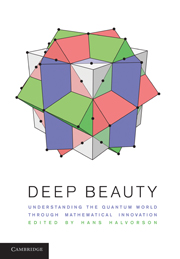Book contents
- Frontmatter
- Contents
- Contributors
- Preface
- Acknowledgments
- Introduction
- I Beyond the Hilbert Space Formalism: Category Theory
- II Beyond the Hilbert Space Formalism: Operator Algebras
- III Behind the Hilbert Space Formalism
- 9 Quantum Theory and Beyond: Is Entanglement Special?
- 10 Is Von Neumann's “No Hidden Variables” Proof Silly?
- 11 Foliable Operational Structures for General Probabilistic Theories
- 12 The Strong Free Will Theorem
- Index
11 - Foliable Operational Structures for General Probabilistic Theories
from III - Behind the Hilbert Space Formalism
Published online by Cambridge University Press: 01 June 2011
- Frontmatter
- Contents
- Contributors
- Preface
- Acknowledgments
- Introduction
- I Beyond the Hilbert Space Formalism: Category Theory
- II Beyond the Hilbert Space Formalism: Operator Algebras
- III Behind the Hilbert Space Formalism
- 9 Quantum Theory and Beyond: Is Entanglement Special?
- 10 Is Von Neumann's “No Hidden Variables” Proof Silly?
- 11 Foliable Operational Structures for General Probabilistic Theories
- 12 The Strong Free Will Theorem
- Index
Summary
Preamble
In this chapter, a general mathematical framework for probabilistic theories of operationally understood circuits is laid out. Circuits consist of operations and wires. An operation is one use of an apparatus, and a wire is a diagrammatic device for showing how apertures on the apparatuses are placed next to each other. Mathematical objects are defined in terms of the circuit understood graphically. In particular, we do not think of the circuit as sitting in a background time. Circuits can be foliated by hypersurfaces composed of sets of wires. Systems are defined to be associated with wires. A closable set of operations is defined to be one for which the probability associated with any circuit built from this set is independent both of choices on other circuits and of extra circuitry that may be added to outputs from this circuit. States can be associated with circuit fragments corresponding to preparations. These states evolve on passing through circuit fragments corresponding to transformations. The composition of transformations is treated. A number of theorems are proven, including one that rules out quaternionic quantum theory. The case of locally tomographic theories (where local measurements on a systems components suffice to determine the global state) is considered. For such theories, the probability can be calculated for a circuit from matrices pertaining to the operations that constitute that circuit. Classical probability theory and quantum theory are exhibited as examples in this framework.
- Type
- Chapter
- Information
- Deep BeautyUnderstanding the Quantum World through Mathematical Innovation, pp. 409 - 442Publisher: Cambridge University PressPrint publication year: 2011
- 30
- Cited by



